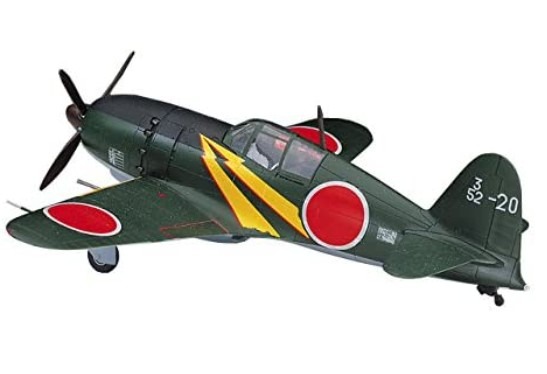The Mitsubishi J2M Raiden or Thunderbolt was designed like no other fighter before it. It emphasized speed, climb and raw firepower. The J2M was designed specifically to bring down huge and heavily armoured American strategic bombers.
In 1939 the Japanese Navy put together specs for a high altitude interceptor. The most important of the navy’s specifications was for a plane that could climb to 20,000 in six minutes or less. Jiro Horikoshi of the Mitsubishi Company, led a team of designers to create an airframe that emphasized climb and speed over everything else.
When the first prototype left the factory in 1942 it even looked different than every Japanese fighter then flying. The J2M was a squat and compact plane with stubby, laminar-flow wings and a long cowl. The first prototype flights were disappointing and an overhaul of the design was undertaken to correct handling problems. The Mitsubishi Kasei engine was not changed however, despite constant problems with the power source. The Raiden finally entered service in late 1943.
With continual power-source problems arising from the Kasei engine and without access to other power sources, mostly due to American strategic bombing, the J2M never reached its full potential. This was fortunate for American forces because the J2M was the only fighter that stood a serious chance against the huge B-29 bomber. It could also out-climb any American fighter then in service. The J2M scored a few kills during the war and after the war the allied testing of the J2M revealed it to be a formidable weapon.
Luckily for the allies only 426 Raidens were built.
| Type | Fighter |
| Power Plant | 1 x 1,820-horsepower |
| Max speed: | 597 km/h (371 mph) |
| Ceiling: | 11,700 m (38,385 ft.) |
| Range: | 1,054 km (655 mi.) |
| Weight (empty): | 2,450 kg (5,423 lb.) |
| Weight (loaded): | 3,494 kg (8,695 lb.) |
| Wingspan: | 10.82 m ( 35 ft. 5 in.) |
| Length: | 9.92 m ( 32 ft. 7 in.) |
| Height: | 3.92 m (12 ft. 11in.) |
| Armament: | 4 x 20mm cannon |
| Service | 1944-1945 |
